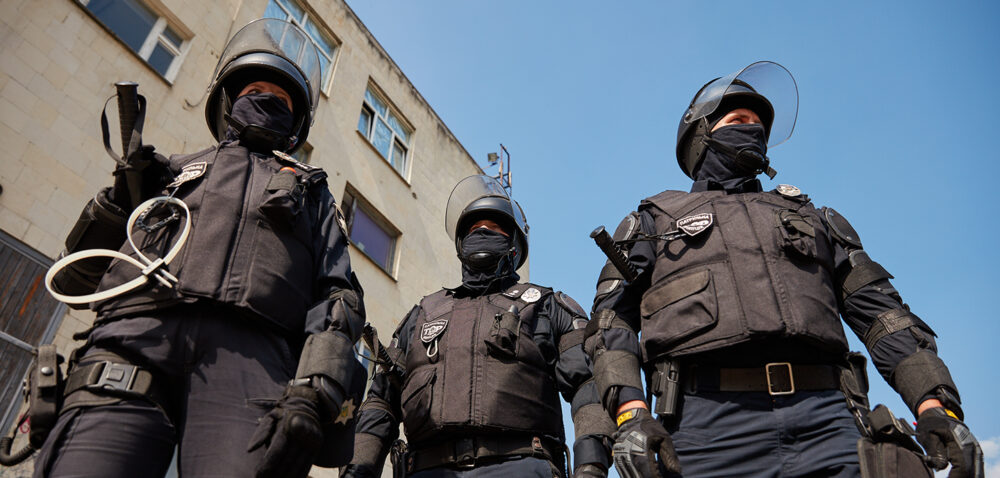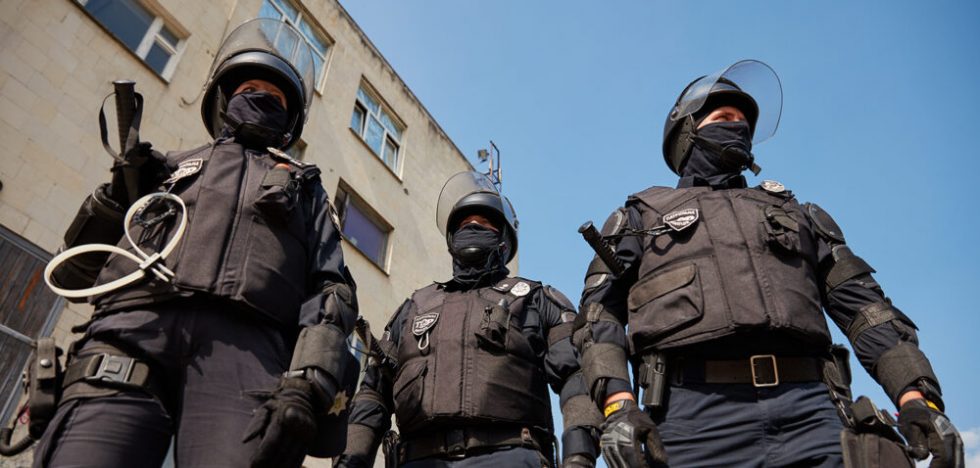 Circumstances of the case: as established in the indictment, patrol police officers PERSON_2 and PERSON_3, who were performing official duties of highway patrol, escorted a vehicle driven by PERSON_1, on the suspicion of the driver driving this vehicle in a state of alcohol intoxication. PERSON_2 and PERSON_3 demanded that PERSON_1 stop. However, PERSON_1 did not comply with the specified requirements and continued driving, after which he left the car and hid from the police at his place of residence.
Circumstances of the case: as established in the indictment, patrol police officers PERSON_2 and PERSON_3, who were performing official duties of highway patrol, escorted a vehicle driven by PERSON_1, on the suspicion of the driver driving this vehicle in a state of alcohol intoxication. PERSON_2 and PERSON_3 demanded that PERSON_1 stop. However, PERSON_1 did not comply with the specified requirements and continued driving, after which he left the car and hid from the police at his place of residence.
Later, PERSON_1, being in a state of alcohol intoxication, entered into a conflict with police officers PERSON_2 and PERSON_3, who were in police uniforms, with chevrons, epaulettes, other relevant attributes and means of personal protection. During the conflict, PERSON_1 actively resisted the police officers, behaved aggressively, pushed and grabbed their clothes, did not respond to the legal demands of the latter, refused to stop his illegal actions and threatened the police officers with physical violence. In the course of the conflict, PERSON_1 caused minor physical injuries to PERSON_2, and PERSON_3 caused moderate physical injuries, which caused a long-term health disorder. In addition, PERSON_1 insulted PERSON_4, called him obscene words, and then inflicted minor physical injuries on him, which caused a short-term health disorder.
The positions of the courts of the first and appellate instances: according to the verdict of the local court, the actions of PERSON_1 were qualified under Part 2 of Art. 342, Part 2 of Art. 345 of the Criminal Code.
The Court of Appeal upheld this verdict.
In the cassation appeal, the defense attorney claimed that the actions of PERSON_1 were wrongly qualified by the local court, since the actions of PERSON_1 involved a necessary defense, and the actions of the police officers of PERSON_2 and PERSON_3 were provocative.
The position of the CCS: the decision of the appellate court was canceled and a new trial was ordered in the appellate court.
Justification of the CCS position: the panel of judges of the CCS observes that the appellate court, leaving the defense's appeal unsatisfied, did not properly motivate its decision, did not check all the arguments of the appeal and did not give comprehensive answers to them.
In particular, in the verdict, the court of first instance found it proven that the police officers used physical force, special equipment and handcuffs as a result of the fact that the convict threatened the police officers and behaved inappropriately. Instead, at the trial of the local court, the witnesses claimed that the police provoked a conflict with PERSON_1 and attacked him for no reason, and therefore he did not resist them, but on the contrary defended himself from the illegal actions of the police officers PERSON_2 and PERSON_3. However, the first-instance court, having critically assessed the testimony of the specified witnesses, did not provide an explanation why it did not take this evidence into account, noting only that it was contradictory.
At the same time, when solving the question of the existence of resistance in the actions of the accused person (Article 342 of the Criminal Code), the court must take into account the behavior of the police officer or police officers when they presented legal demands and the subsequent development of events in connection with these demands. According to established judicial practice, resistance within the meaning of Art. 342 of the Criminal Code is active physical opposition to the police officer's performance of his legal powers. Thus, based on this position, in order to determine the presence of resistance in the actions of the accused person, the prosecution must prove both the presence of an objective side of the act, that is, a certain active physical influence on the part of the accused person, and the focus of his intention precisely on opposing the performance of official powers.
It should be taken into account that the actions of a person, aimed at counteracting unjustified and excessive violence by a police officer, cannot be qualified as resistance under Art. 342 of the Criminal Code. If a person pushes a policeman away to prevent a blow with a baton, or covers his face from a blow, as a result of which the policeman suffers an injury to his hand, or grabs the policeman's clothes to prevent him from falling, such actions cannot be considered resistance within the meaning of Art. 342 of the Criminal Code, since their purpose is not to oppose the legal activities of the police, but to avoid danger to the life and health of a person.
In order to draw a not always obvious boundary between resistance within the meaning of Art. 342 of the Criminal Code and actions caused by reflex reactions or self-defense, the court must take into account not only the fact of physical impact on the police officer by the accused person, but also the context in which the event took place.
That is, it is necessary to take into account the compliance of police actions with the requirements of normative acts regulating police activity. In particular, Art. 29 of the Law of Ukraine "On the National Police" requires that the police measure be, among other things, necessary and proportionate. Therefore, when deciding whether the actions of the accused have resistance, the court must make sure that the measures applied to the accused by the police were necessary and proportionate to the existing situation and were applied in accordance with the procedure established by law. In the case of the use of force by the police without warning, the court must determine whether the person's actions were determined by an instinctive reaction to unexpected violence and an attempt to avert a danger to life and health.
The same considerations should also be taken into account when assessing the presence or absence of the composition of the crime provided for in Art. 345 of the Criminal Code.
Thus, the establishment of the specified aspects of the event is important for the conclusion about the presence or absence in the actions of a person of the crimes provided for in Art. 342 and Art. 345 of the Criminal Code.
You can read more about the text of the resolution dated November 10, 2021 in case No. 671/396/20 (proceedings No. 51-3377км21) at https://reyestr.court.gov.ua/Review/101138438 .




